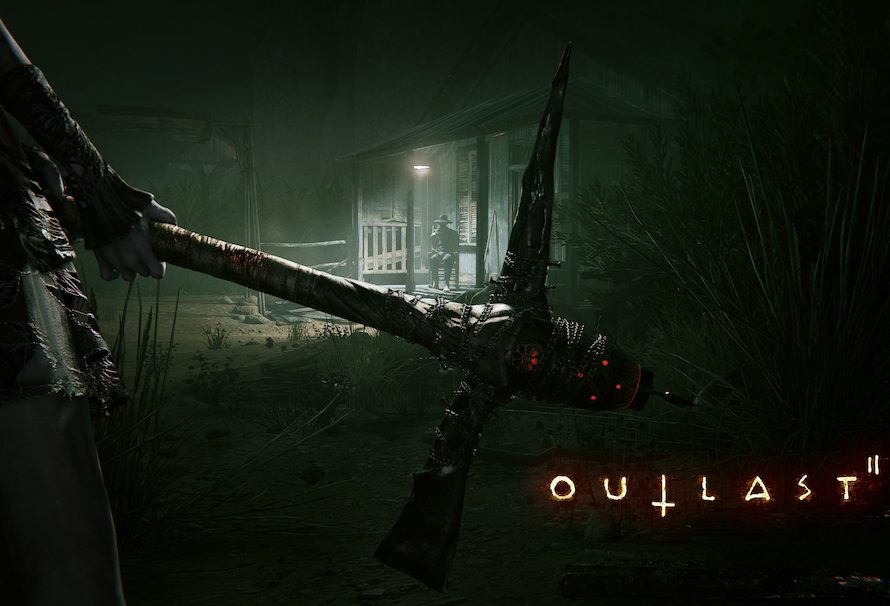Outlast 2 is a brutal descent into madness, blending psychological horror with religious fanaticism, mind control, and trauma. As journalist Blake Langermann, players navigate a harrowing journey through the Arizona desert in search of his wife, Lynn. What unfolds is a disturbing tale full of hallucinations, hidden truths, and narrative ambiguity — and its ending leaves many with more questions than answers.
While there’s no single “true” interpretation of Outlast 2’s finale, we can break down the most prominent theories and discuss the clues hidden in the game’s twisted world.
Content Warning: This article discusses sensitive topics such as suicide, death, murder, and childbirth.
Jessica’s Death: A Hidden Truth?

Throughout the game, Blake experiences visions of his childhood friend Jessica Gray, whose apparent suicide is hinted to be the catalyst for his ongoing trauma. However, Outlast 2 subtly suggests a darker truth — that Jessica was assaulted and killed by Catholic school figure Father Loutermilch, who then staged her death to appear as a suicide. These flashbacks are interwoven with Blake’s present-day experiences, implying a deep psychological scar that colours everything he sees.
Some late-game hallucinations show Jessica with a wounded neck — consistent with the suicide story — while others depict her unharmed, reinforcing the idea that Blake is grappling with fragmented and manipulated memories. This ambiguity is a recurring theme in Outlast 2, emphasizing the unreliability of Blake’s perception.
Lynn’s Baby: Real or Imagined?

Perhaps the most debated moment in Outlast 2 is the birth of Lynn’s baby at the end of the game. Lynn, who never appeared visibly pregnant during the campaign, suddenly goes into labor after Blake finds her. She dies shortly after giving birth — but not before whispering the chilling line: “There’s nothing there.”
This moment calls the baby’s existence into question. Could the pregnancy have been a hallucination induced by the mind-warping signals broadcast by the Murkoff Corporation? It’s worth noting that no other character directly acknowledges the baby, and the player never sees it clearly. This supports the theory that both the pregnancy and the child were symptoms of the psychological manipulation central to the game’s story.
Blake’s Fractured Mind

By the game’s end, Blake is a broken man. His mental state, already strained by guilt over Jessica’s death, deteriorates rapidly under the influence of trauma, religious extremism, and Murkoff’s “microwave signal” — an experimental mind control technology first introduced in the original Outlast.
The signal causes hallucinations, violent behaviour, and full-on psychotic breaks in those exposed to it — especially in the town of Temple Gate, where most of Outlast 2 takes place. Blake’s increasingly unhinged perspective, his blending of past and present, and the surreal visuals all point to a man who can no longer distinguish reality from delusion.
Are There Multiple Endings?

Technically, Outlast 2 has a single-core ending, but there are subtle variations during the final vision of Jessica. In one version, she appears with a wounded neck. In another, she seems unharmed. This detail doesn’t drastically alter the narrative but reinforces the game’s focus on perception, trauma, and unreliable memories.
Unlike many other games, there are no dialogue choices or branching paths to trigger different endings – everything funnels into the same conclusion, albeit one left open to interpretation.
So What Really Happened?
The truth is, that Outlast 2 intentionally avoids giving players a clear answer. It’s a story about how trauma, guilt, and external manipulation (via Murkoff’s experiments) can completely unravel a person’s mind. Whether Lynn’s baby existed or not, whether Jessica’s murder was real or a guilt-fueled fantasy — it’s all filtered through Blake’s unstable psyche.
The most grounded theory is that Murkoff’s signal fractured the town’s population and pushed Blake over the edge, blurring the line between memory, fear, and induced hallucination. The result is a story that demands player interpretation — and rewards careful attention.

